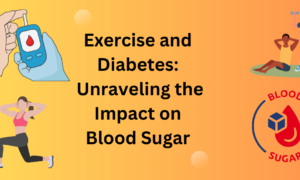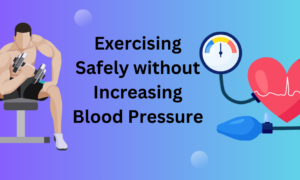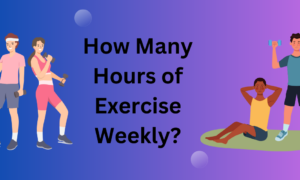Periodization is a fundamental principle in fitness that breaks training into specific, goal oriented phases. Instead of doing the same exercises at the same intensity all year round, athletes and fitness enthusiasts use structured changes in volume, intensity and type of exercise to keep progressing. The idea behind workout periodization is to adapt while avoiding burnout or plateaus. It allows the body to go through different training cycles, each focusing on a different physical quality like strength, endurance or power.
In well designed structured fitness plans these cycles build on top of each other, ensuring long term progress and reducing injury risk. Periodization isn’t just for elite athletes, it’s just as valuable for beginners and intermediate lifters who want to balance recovery with progress. Understanding this system gives you clarity and purpose, and turns random workouts into strategic steps towards long term fitness improvement.
The Science Behind Training Cycles
Training cycles come from exercise physiology where the body adapts best to varied stress in planned intervals. Typically these are broken down into macrocycles, mesocycles and microcycles; each serving a purpose. A macrocycle is several months or a year and outlines the overall goals of a structured fitness plan. A mesocycle is a few weeks long and targets a specific area of performance such as hypertrophy, strength or endurance. A microcycle organizes daily or weekly workouts with precise load management.
This layered approach means every phase contributes to overall progress without overloading the body. The structure of periodization prevents stagnation and overtraining by alternating high and low intensity sessions and allowing recovery to fuel adaptation. When done right these cycles will guide you to consistent gains while maintaining motivation and performance balance.
Types of Periodization Models
There are many ways to periodize your workout. Depending on your goals and experience level. The traditional linear model increases intensity over time and decreases volume. Perfect for beginners who need steady progression. The undulating or non linear model changes intensity and volume more frequently, often within a week. Good for intermediate athletes who want variety. Block periodization breaks training into blocks focused on one quality at a time.
Good for competitive lifters or athletes with a deadline. In all these models training cycles give your body a rhythm. Effective fitness plans often combine models and tailor to the sport, lifestyle and recovery of the athlete. The key is progression; each model is a roadmap that evolves with you so you can grow without compromising health.
Aligning Periodization with Fitness Goals
Every fitness journey has a purpose; whether it’s building muscle, losing fat, increasing strength, or enhancing endurance; and workout periodization helps align workouts to those goals. For example, someone training for a marathon will emphasize aerobic development and gradual mileage increases across training cycles, while a bodybuilder focuses on hypertrophy phases followed by strength and deload weeks. Structured fitness plans use this adaptability to maximize results within realistic timelines.
Each phase is tailored not only to physical development but also to mental readiness, preventing burnout and maintaining focus. Setting measurable milestones within the periodization framework ensures that every training decision supports long-term progress. Instead of guessing what to do next, athletes move strategically through cycles that mirror their ambitions, creating a sense of purpose and sustained motivation throughout their journey.
The Role of Recovery and Deloading Phases
Recovery is as essential to workout periodization as the workouts themselves. Without strategic rest and deloading, the benefits of intense training cycles cannot be fully realized. A deload week typically involves reducing training intensity or volume to allow muscles, joints, and the nervous system to recover. It doesn’t mean stopping completely but instead shifting the focus toward restoration. Structured fitness plans incorporate these recovery phases systematically to prevent overtraining and mental fatigue.
This period allows physiological adaptations to solidify, ensuring the next phase begins from a stronger foundation. Skipping recovery often leads to injuries, hormonal imbalances, and motivation loss. By planning rest intentionally, athletes not only safeguard their health but also improve long-term consistency and performance. Periodization, therefore, isn’t about working harder; it’s about working smarter, with balance and foresight built into the program.
Periodization for Different Training Goals
Workout periodization is highly versatile, capable of addressing diverse fitness goals across different populations. For strength-focused athletes, early training cycles emphasize volume to build muscle endurance, gradually transitioning toward heavier, low-repetition loads to maximize power. Endurance athletes might reverse this, starting with base conditioning before integrating tempo and speed work. Fat loss programs often alternate between metabolic conditioning and resistance phases to keep metabolism elevated.
Structured fitness plans use periodization principles to prevent the body from adapting too quickly, maintaining a steady rate of improvement. Even those focused on general fitness benefit from alternating between phases of intensity and recovery. The key is specificity; each cycle must serve a defined purpose, leading progressively toward the ultimate goal. When applied correctly, periodization transforms training into a long-term system that supports sustainable growth and adaptability.
Monitoring Progress and Adjusting the Plan
A successful workout periodization plan requires continuous evaluation. Tracking performance metrics; such as load lifted, heart rate recovery, or endurance times; helps identify when adjustments are needed. These insights reveal whether an athlete is progressing, plateauing, or overreaching. Modifying training cycles based on feedback ensures that programs remain responsive to real-world outcomes rather than rigid templates. Coaches often use data from wearable technology or simple logs to assess fatigue and readiness, adjusting intensity accordingly.
In structured fitness plans, this adaptability is crucial for long-term success. If recovery is insufficient or performance declines, volume can be reduced or focus shifted temporarily. The process of refining the plan ensures efficiency, making sure every session contributes meaningfully to overall progress. Flexibility within structure is what separates sustainable training from short-lived efforts.
Integrating Nutrition and Lifestyle into Periodization
No workout periodization strategy exists in isolation from nutrition and lifestyle. To make training cycles truly effective, dietary and recovery habits must align with each phase’s demands. During high-intensity or strength-building periods, caloric and protein intake should increase to support muscle repair and growth. Conversely, in deload or endurance phases, macronutrient balance shifts toward sustaining energy and promoting recovery.
Structured fitness plans that consider sleep, hydration, and stress management produce superior results because they optimize every variable influencing performance. Inconsistent nutrition undermines progress, just as poor recovery negates hard work. By synchronizing lifestyle factors with training intensity, individuals maximize adaptation while maintaining overall well-being. Periodization becomes not just a workout plan but a holistic strategy for sustainable physical development and resilience.
The Psychological Benefits of Structured Fitness Plans
Beyond physical gains, workout periodization provides a psychological framework that enhances discipline and motivation. Working through defined training cycles gives athletes tangible milestones and prevents the monotony of repetitive routines. Knowing that each phase serves a purpose creates mental engagement and a sense of progression. Structured fitness plans also teach patience; athletes learn to trust the process rather than chase quick results.
This approach reduces anxiety and promotes confidence, as each phase reveals measurable progress. The psychological stability derived from this structure extends beyond the gym, influencing focus, goal-setting, and stress management in daily life. In essence, periodization cultivates consistency by providing both physical and emotional direction, making fitness sustainable and rewarding over the long term.
Applying Periodization to Everyday Fitness
While the concept of workout periodization might sound advanced, it’s easily adaptable to everyday fitness enthusiasts. People with limited time can benefit by structuring training cycles that fit their schedules, alternating between phases of strength, endurance, and recovery. Even casual gym-goers can follow structured fitness plans that vary load and intensity every few weeks to maintain progress. For example, a four-week strength block followed by a week of lighter functional training can keep motivation high and prevent plateaus.
Periodization removes guesswork from workouts, ensuring each session serves a purpose. The beauty of this system lies in its scalability; it can be as detailed or as simple as the individual needs. By understanding and applying periodization principles, anyone can make their fitness journey more intentional and results-driven.

Avoiding Common Mistakes in Periodized Training
Many individuals misunderstand workout periodization by overcomplicating or misapplying it. Common mistakes include neglecting recovery, increasing intensity too quickly, or sticking rigidly to a plan without adjustments. Skipping deload weeks disrupts adaptation, leading to fatigue and stalled progress. Failing to realign training cycles with current fitness levels can also create imbalances or burnout. In structured fitness plans, flexibility and observation are as important as structure.
Listening to the body’s signals and adjusting loads or durations prevents regression. Another frequent error is copying professional athletes’ programs without considering personal capacity or goals. Effective periodization must be individualized, evolving with experience and feedback. Avoiding these pitfalls ensures steady growth and long-term adherence to the training process.
Periodization in the Context of Aging and Longevity
As people age, the body’s response to stress and recovery changes, making workout periodization even more crucial. Older adults benefit from training cycles that emphasize mobility, stability, and joint health before progressing into strength and power phases. Recovery windows may need to be longer, and volume adjustments become essential for safety and sustainability.
Structured fitness plans designed for aging populations can maintain muscle mass, bone density, and cardiovascular health without overstressing the body. By alternating intensity and rest, periodization supports vitality and independence through later years. It also fosters confidence, as individuals recognize measurable progress even with modified workloads. Thoughtful programming helps align aging physiology with realistic, rewarding goals that promote longevity and lifelong fitness engagement.
The Future of Periodized Fitness Programming
Technology is transforming workout periodization into a more data-driven and personalized practice. Fitness apps and wearables now analyze biometrics to suggest real-time adjustments to training cycles based on recovery and readiness scores. This integration enhances structured fitness plans, offering adaptive feedback tailored to each user’s physiology. Predictive analytics can anticipate plateaus, helping athletes shift phases before stagnation occurs.
The fusion of artificial intelligence and exercise science is making periodization more accessible than ever, bringing elite-level precision to recreational athletes. As personalization continues to evolve, the future of periodized training lies in its flexibility; combining structure with intelligent adaptability to meet every individual’s needs. These innovations ensure that the principles of periodization remain timeless while evolving with modern technology and human potential.
Periodization for Different Fitness Levels
The beauty of workout periodization lies in its flexibility to suit every fitness level, from beginners to advanced athletes. Novices can start with simple training cycles that introduce progressive overload gradually; building foundational strength before tackling high-intensity phases. Beginners benefit from longer adaptation periods with moderate workloads to avoid overtraining. Intermediate individuals can incorporate variety through undulating or block models that alternate focus areas, ensuring continuous progress.
Advanced athletes, on the other hand, require more complex structured fitness plans that manipulate intensity, volume, and recovery precisely to target peak performance. Regardless of experience, the key is progression; each phase must challenge the individual slightly more than the last without overwhelming recovery. Personalized adjustments make periodization universally applicable, offering a scalable method that evolves alongside the person’s strength, endurance, and confidence, ensuring sustainable fitness gains over time.
The Role of Coaches in Designing Periodized Programs
While many people experiment with workout periodization independently, experienced coaches bring valuable expertise in crafting effective, individualized training cycles. A skilled coach can assess current performance, identify weaknesses, and build structured fitness plans tailored to specific timelines or goals. They ensure the correct balance between intensity, volume, and rest while preventing common pitfalls like overtraining or under-recovery.
Coaches also help interpret data; such as strength metrics or heart rate variability; to refine training phases in real time. Their external perspective provides accountability and objectivity, helping athletes stay consistent even when motivation dips. For competitive athletes, coaches synchronize training with event calendars to optimize peak readiness. The guidance of an informed coach transforms periodization from theory into precise execution, maximizing results and reducing risk.
Combining Strength and Endurance Through Hybrid Periodization
Hybrid training is becoming increasingly popular as athletes aim to balance strength and endurance simultaneously. Traditional workout periodization often separates these goals, but hybrid models integrate both within carefully structured training cycles. For example, one phase might emphasize resistance training to build muscular strength, while the next focuses on aerobic conditioning to enhance endurance. Structured fitness plans for hybrid athletes require meticulous scheduling to prevent one goal from undermining the other.
Recovery plays a crucial role, ensuring the body adapts efficiently to dual demands. This integrated approach suits modern fitness enthusiasts who want both functional strength and cardiovascular health. By alternating intensities and modalities, hybrid periodization ensures balanced development; proving that you don’t have to choose between lifting heavier or running farther; you can do both effectively with the right structure.
Adapting Periodization for Modern Lifestyles
In today’s fast-paced world, many people struggle to maintain consistency in their training due to busy schedules. Periodization can adapt seamlessly to these realities. A flexible workout periodization approach allows for shorter but more focused training cycles, aligning with changing work or family commitments. For instance, condensed mesocycles of three to four weeks can deliver meaningful progress without overwhelming time demands. Structured fitness plans can incorporate home workouts, travel-friendly exercises, or active recovery days to sustain progress when life gets hectic.
The emphasis shifts from perfection to persistence; prioritizing quality over quantity. Technology also helps by tracking progress and adjusting workloads automatically through smart apps. This adaptability ensures that periodization remains accessible and practical, helping individuals achieve long-term fitness goals without sacrificing balance or well-being in their daily lives.
Conclusion: The Power of Structured Progress
Periodization remains one of the most effective frameworks for achieving consistent and sustainable results in fitness. By aligning workout periodization, training cycles, and structured fitness plans, individuals can transform their workouts from routine exercise into a strategic pursuit of growth.
The balance between intensity, recovery, and progression ensures long-term success while minimizing risk. Whether training for performance, health, or aesthetics, the principles of periodization provide clarity and direction. It is a journey of continuous adaptation, driven by purpose and planning. When properly applied, periodization not only enhances performance but also cultivates discipline, confidence, and resilience; traits that extend far beyond the gym into every aspect of life.





















